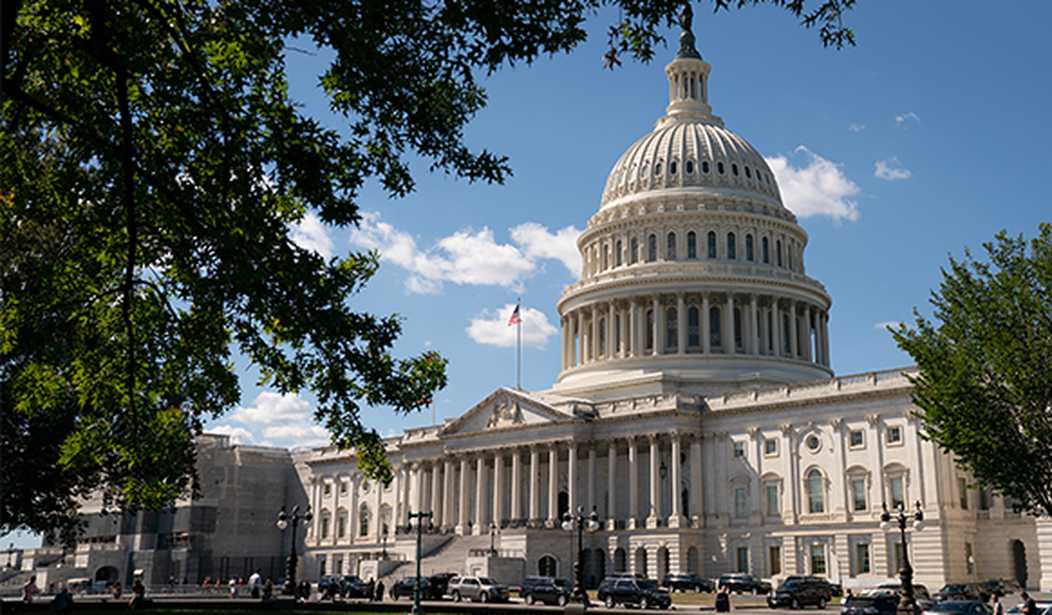Federal spending programs that are "designed to transfer income ... to individuals or families" are set to hit a record $3,223,943,000,000 in fiscal 2020, according to projections published by the Office of Management and Budget.
These so-called "payments for individuals" (as the OMB calls them) are projected to account for 67.9% of all federal spending this fiscal year and consume 14.4% of the nation's gross domestic product.
In its Historical Table 6.1, Composition of Outlays, the OMB reports the annual amounts spent on "payments for individuals" going back to fiscal 1940 in both current year and constant fiscal 2012 dollars. In the same table, it published its estimated totals for fiscal 2019 through fiscal 2024.
In 1940, the federal government spent only 2.1% of GDP on "payments for individuals." As a percentage of GDP, these payments peaked in fiscal 2010 at 15.5%.
But in inflation-adjusted dollars, the total amount the federal government spends on these payments has increased since then.
In fiscal 2010, federal "payments for individuals" totaled $2,406,300,000,000 in constant 2012 dollars. But by fiscal 2019, according to the OMB estimate, they had increased to $2,835,300,000,000 in constant fiscal 2012 dollars, and in fiscal 2020, they are projected to hit a record $2,837,500,000,000 in constant 2012 dollars (or $3,223,943,000,000 in current year dollars).
What exactly are these "payments to individuals" that will consume 67.9% of all federal spending this year?
Recommended
"These are federal government spending programs designed to transfer income (in cash or in kind) to individuals or families," the OMB says in the introduction to its historical spending tables.
"To the extent feasible," says the OMB, "this category does not include reimbursements for current services rendered to the Government (e.g., salaries and interest)."
"The payments may be in the form of cash paid directly to individuals or they may take the form of the provision of services or the payment of bills for activities generally financed from personal income," the OMB says.
"They include outlays for the provision of medical care (in veterans' hospitals, for example) and for the payment of medical bills (e.g., Medicare)," says the OMB.
"They also include subsidies to reduce the cost of housing below market rates and food and nutrition assistance (such as SNAP -- formerly food stamps)," the OMB says.
In Table 11.3, Outlays for Payments for Individuals by Category and Major Program, the OMB breaks down the total outlays for "spending programs designed to transfer income" by the programs through which the income is transferred.
The most expensive set of these programs deals with medical care.
In fiscal 2020, the OMB estimates, federal medical care programs will spend a total of $1,434,169,000,000. Within this category, Medicare will spend $808,340,000,000, and Medicaid will spend $418,151,000,000.
Social Security and the railroad retirement program will spend another $1,110,989,000,000.
The civil service retirement program will spend $89,524,000,000. The earned income tax credit will spend $62,551,000,000. The Supplemental Security Income program will spend $53,440,000,000. Housing assistance programs will spend $48,928,000,000. The Supplemental Nutrition Assistance Program (food stamps) will spend $48,603,000,000. Non-veteran student assistance will spend $44,654,000,000.
When a family's child tax credits exceed their tax liability, payments will cost $35,595,000,000.
And child nutrition and special milk programs will cost $24,862,000,000.
All of this spending will be conducted by a government that is going bankrupt.
At the same time the federal government will be spending a record amount on "programs designed to transfer income," according to the OMB's estimates, it will also be setting a record in overall spending while running up a record debt -- despite bringing in record tax revenues.
This fiscal year, according to the OMB's Table 1.1, the federal government will haul in $3,644,772,000,000 in total tax revenue, push out $4,745,573,000,000 in total spending and run a deficit of $1,100,801,000,000.
At the end of the fiscal year, the OMB predicts in its Table 7.1, federal debt will reach $24,057,463,000,000.
In the OMB's Table 1.3, which puts the numbers in constant fiscal 2012 dollars, this year's projected total tax revenues ($3,209,300,000,000) and total spending ($4,178,500,000,000) are both records.
When the projected debt total for the end of this fiscal year ($24,057,463,000,000) is compared to the debt at the close of previous fiscal years (after they have been adjusted into constant September 2019 dollars using the Bureau of Labor Statistics inflation calculator), it, too, is a record.
The people who run our government are truly record setters -- when it comes to taking money from one group and giving it to another.
That includes taking money from future generations and spending it on their own.

























Join the conversation as a VIP Member